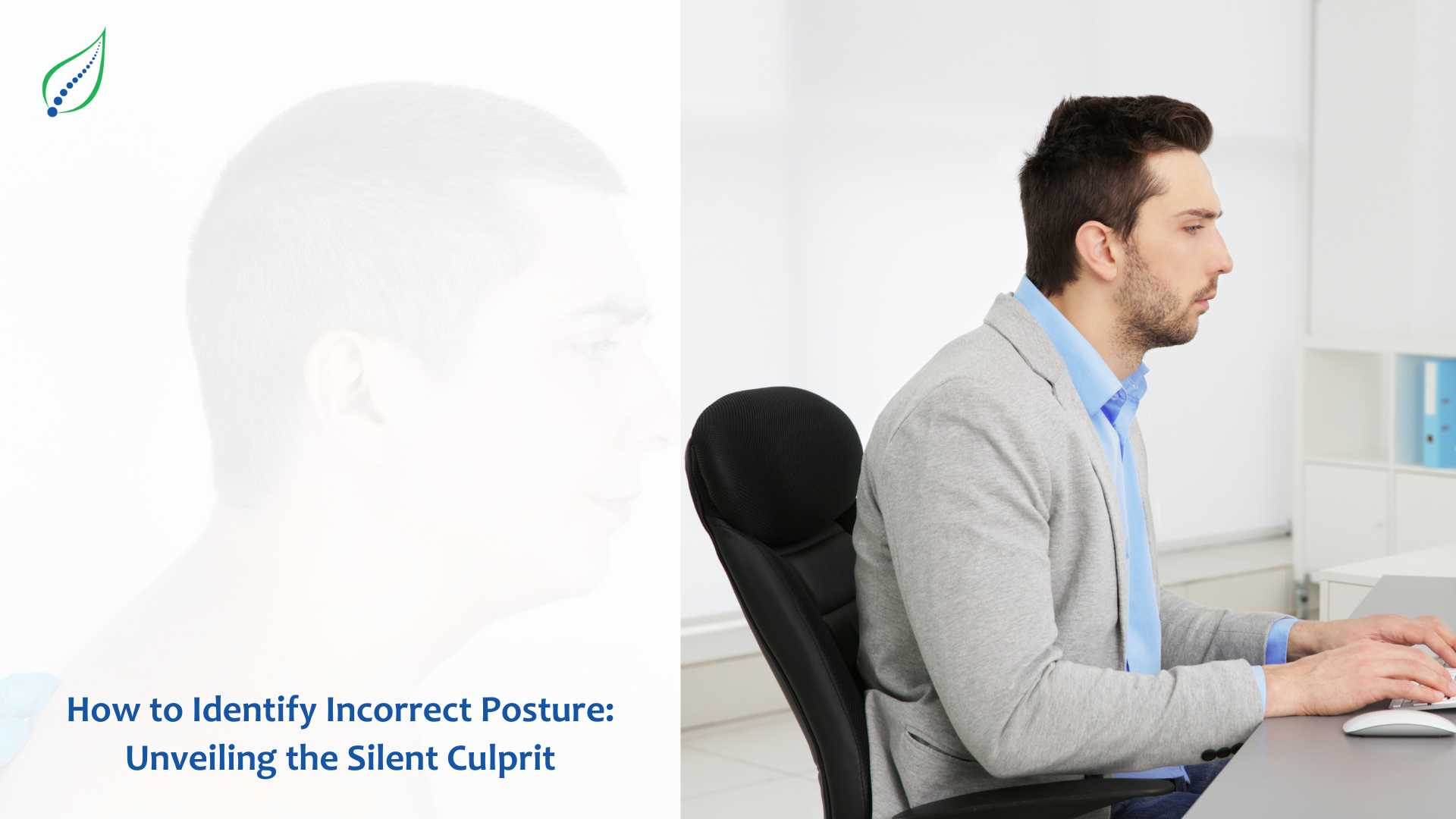How to Identify Incorrect Posture: Unveiling the Silent Culprit
Our daily lives, which are usually filled with activity, may not pay much attention to posture. But it is very important for our health and feeling good. While we move around in our busy routines, a lot of people might unknowingly develop wrong habits of posture that can cause many health problems later on. We will discuss this topic in detail in the blog post - identifying wrong body positions, finding signals and understanding how it impacts our physical state.
The Importance of Recognizing Poor Posture
Now, let us look at some important points to recognize incorrect posture. But before that, why is awareness about bad posture so crucial? Having poor posture isn't just a matter of aesthetics; it silently adds to many health issues. This includes problems such as back pain and muscle weariness, up to more severe ones like dysfunction in the spine or deterioration of joints - all these can be linked with a person's bad positioning. When we are able to understand and notice the signs of incorrect posture, it becomes a starting point for preventing these problems and making our life better.
Visual Cues: The Mirror Test
Visual observation is one of the simplest methods to figure out wrong posture. Just stand in front of a full-length mirror and check your normal stance. Look for these main signs:
- Rounded Shoulders: When your shoulders seem to be hunching forward rather than sitting back in a comfortable way, it shows that you have the wrong posture. This can cause strain on the upper back and make you look hunched over.
- Forward Head Position: Take note of the position of your head in comparison to your shoulders. If it protrudes forward rather than being aligned with your spine, you probably have bad neck posture. This misalignment can cause strain on the neck muscles and lead to chronic pain.
- Uneven Hips or Shoulders: Look if your hips and shoulders are balanced. If there is no symmetry in these parts, it could mean an unevenness of posture due to muscle differences or wrong positioning of the spine.
- Protruding Belly: A visible potbelly, particularly when standing, could be a symbol of weak stomach muscles and insufficient core involvement – elements that add to improper posture.
- Knees bent when standing: If you notice that your knees are a little bit bent while you try to stand straight, it could mean there are muscle imbalances affecting how well-balanced and aligned your body is.
The Dynamic Posture Check
Besides static posture, it is also important to consider how we move and hold ourselves during activities. Some ways to check your dynamic posture are:
- Walking Assessment: You can ask a close friend to watch you as you walk normally. They must observe if there are any signs of an unbalanced gait, like one shoulder being lower than the other or your head tilting towards a certain direction.
- Sitting Habits: Observe your sitting posture, particularly during long time spans. Are you inclined to slouch or lean on one side? Is there a loss of natural curve in your lower back when you sit? Do your shoulders roll forward, or does your head jut out in front of them? Are you experiencing any numbness or tingling in hands, wrists or fingers? All these signs point towards an incorrect sitting position.
- Tech Use: Observe your body's position when utilizing technology such as smartphones or tablets. The issue of "tech neck," which arises from the head leaning forward to view screens, is a prevalent posture concern in this era dominated by digital devices.
- Lifting Technique: Watch for instances where you regularly bend over from your waist when picking up things, because the wrong method of lifting is both an indication and reason for bad posture.
The Role of Muscle Imbalances
Understanding the interplay between different muscle groups can provide deeper insights into posture problems:
- Static vs. Phasic Muscle Fibers: Using the wrong type of muscle fibers for postural support, such as depending too much on phasic (fast-twitch) ones instead of static (slow-twitch) fibers that are meant for this function, can cause poor posture due to faster tiredness and less effective maintenance of body position.
- Weakness and Tightness in Muscles: When you have long-term bad posture, some muscles may become stretched too much and weak, while others can get tight and short. This unbalance continues problems with your body's posture. You can recognize it by finding patterns of tightness and weakness in certain muscle groups.
Final Words
Understanding wrong posture is a continuous task which needs focus and awareness towards the signals coming from your body. By frequently doing self-analysis and being conscious about these signs, you can detect postural issues at their beginning stages and work to rectify them.

_1742973131.png)
_1742634080.png)

